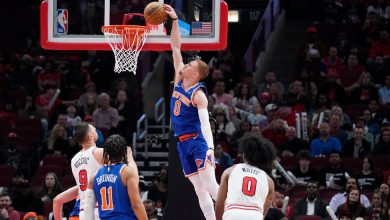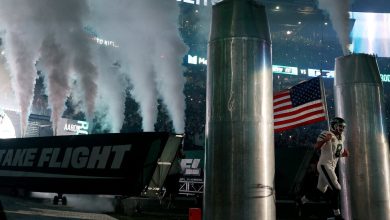I Investigated Bonds and Clemens. Yes, They Belong in Cooperstown.

Friday is the last day for voters in the Baseball Writers’ Association of America to submit their 2022 Baseball Hall of Fame ballots. Listed on those ballots are two players in their 10th and final year of Hall of Fame eligibility who truly dominated their era but haven’t been voted in: Barry Bonds and Roger Clemens.
Undoubtedly, this is because toward the end of their careers, both men faced allegations that they had used performance-enhancing drugs (P.E.D.s) banned by their sport. But as a federal agent who investigated both men for years and, as The New York Times reported in 2007, “dug up the evidence that a grand jury used” to indict Bonds on charges related to those allegations, I’ve come to this conclusion: Bonds and Clemens played at a time when the widespread abuse of P.E.D.s in baseball was a result of a collective failure — of Major League Baseball, teams, players, the players’ union, the media and even the fans. To varying degrees, a lot of us were complicit in sitting back and watching the hitting and pitching marvels of that time and turning a mostly blind eye. When evidence was presented during Bonds’s and Clemens’s federal criminal trials, they and other players wound up bearing the brunt of that collective failure and the selective aftermath, and, unfairly, they still are. (Bonds’s 2011 obstruction of justice conviction was overturned in 2015; in 2012, Clemens was acquitted of all charges related to his 2008 congressional testimony.)
The two men should be in the Hall of Fame.
Bonds was a career .298 hitter, an eight-time Gold Glove winner, seven-time National League most valuable player and, most notably, M.L.B.’s all-time leader with 762 home runs. Clemens was a six-time Cy Young Award winner and the 1986 American League M.V.P., with a 354-184 win-loss record and 4,672 career strikeouts. Despite statistics and accolades that clearly place both at the top of their era — and among the greatest across eras — in past years of eligibility, they’ve both failed to garner the necessary 75 percent of the Baseball Writers’ Association vote needed for induction into the Hall. Clearly, it’s because they became poster children for baseball’s “steroids era,” when drug testing went from practically nonexistent to still woefully inadequate, and many players used P.E.D.s with abandon. I know these circumstances well because it became my job to investigate them.
In 2002, I helped start a series of investigations into the proliferation of P.E.D.s throughout professional sports. I dug through the trash of the Bay Area Laboratory Co-operative, known as BALCO. I worked with former Senator George Mitchell on the so-called Mitchell Report that chronicled M.L.B.’s steroids problem. Later in my career, I investigated P.E.D. use in cycling, including helping initiate a federal investigation of Lance Armstrong while he was a member of the U.S. Postal Service-sponsored team. In 2015, I went to work for Ultimate Fighting Championship, better known as UFC, the top mixed martial arts organization, and started developing what I now consider to be one of the best antidoping programs in professional sports.
Here’s what I see: Neither Bonds nor Clemens was charged with using or possessing P.E.D.s. They were charged with making false statements and later cleared. As The Times reported in 2007, the Mitchell Report “tied 89 Major League Baseball players” to “the use of illegal, performance-enhancing drugs.” Bonds and Clemens were mentioned in the report, but they were far from alone. As The Times reported in 2008, U.S. attorneys had “documents that link more than 100 Major League Baseball players to positive tests for steroids conducted in 2003.” I’ve had many conversations with M.L.B. players from that era, and based on those conversations, along with those numbers, I believe that a major portion of M.L.B. players used P.E.D.s before the league and the players’ union agreed to put forth their now-credible anti-P.E.D. program. For a long time, P.E.D. abuse wasn’t an aberration as much as it was part of a larger culture within the sport.
Did M.L.B. officials ultimately take the steps necessary to clean up their sport? Yes. But along the way, it took 10 baseball players and executives testifying under oath before the House Committee on Government Reform in March 2005, at a daylong hearing that increased pressure on the league to get serious about combating P.E.D. use. Before that, from my point of view as a federal investigator, there wasn’t enough proactivity. As an executive for a sports league today, I think it’s incumbent on management and player representatives to set standards and eliminate ambiguity so that athletes can focus on setting and maintaining an example for current and future competitors.
The Mitchell Report concludes that “the use of steroids in Major League Baseball was widespread. The response by baseball was slow to develop and was initially ineffective,” and goes on to say: “Obviously, the players who illegally used performance enhancing substances are responsible for their actions. But they did not act in a vacuum. Everyone involved in baseball over the past two decades — commissioners, club officials, the Players Association and players — shares to some extent in the responsibility for the steroids era.”
I’d add many of us to that list — we savored every towering home run and viselike shutout.
Yes, the Hall of Fame, M.L.B. and the Baseball Writers’ Association are separate organizations. And yes, the Hall of Fame selection criteria include “integrity,” “sportsmanship” and “character,” not just stats and ability — no doubt, some baseball writers place a great deal of weight there. But if we’re going to deny Bonds and Clemens, then there’s something amiss with the integrity of the whole Hall of Fame process and the record of a time when baseball itself didn’t live up to Hall of Fame standards. Bonds and Clemens represented the best on-field performers in baseball — and represented the era in which they played. When you add that up, they should be in Cooperstown, enshrined in the Hall alongside the game’s other greats.
Jeff Novitzky (@JeffNovitzkyUFC) is a former federal agent. He is senior vice president of athlete health and performance at Ultimate Fighting Championship.
The Times is committed to publishing a diversity of letters to the editor. We’d like to hear what you think about this or any of our articles. Here are some tips. And here’s our email: [email protected].
Follow The New York Times Opinion section on Facebook, Twitter (@nytopinion) and Instagram.



